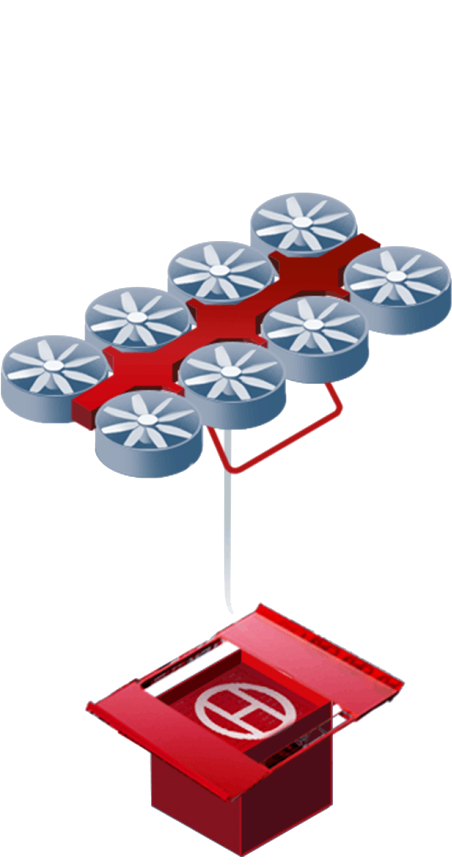Current smart firefighting systems can only "detect" issues but unable to effectively "resolve" them, for example, through fire extinguishing operations. Particularly, in petrochemical fire scenarios, where explosions are highly likely, there is an urgent need for firefighting combat capabilities that can intervene the fire situation as early as possible. In these situations, even after the conventional 15-minute responding time for firefighting teams, a routine fire could escalate the matter into an explosion.

-
Low-Alt Emergency Firefighting
- Fire extinguishing for high-rise buildings within cities
- Fire extinguishing scenarios in narrow urban alleyways
- Fire scenarios: smart parks, chemical plants, petroleum & refineries, PV stations
- Scenarios for Marine Fire Extinguishing
- Scenarios for Aerial Ambulance/Traffic Accident Rescue/Forest Grassland Firefighting
- Logistics scenarios: plateau-mountain areas, natural disasters, islands
- Emergency Communication
Fire extinguishing for high-rise buildings within cities
Fire extinguishing scenarios in narrow urban alleyways
Fire scenarios: smart parks, chemical plants, petroleum & refineries, PV stations
Scenarios for Marine Fire Extinguishing
Scenarios for Aerial Ambulance/Traffic Accident Rescue/Forest Grassland Firefighting
Logistics scenarios: plateau-mountain areas, natural disasters, islands
Emergency Communication





